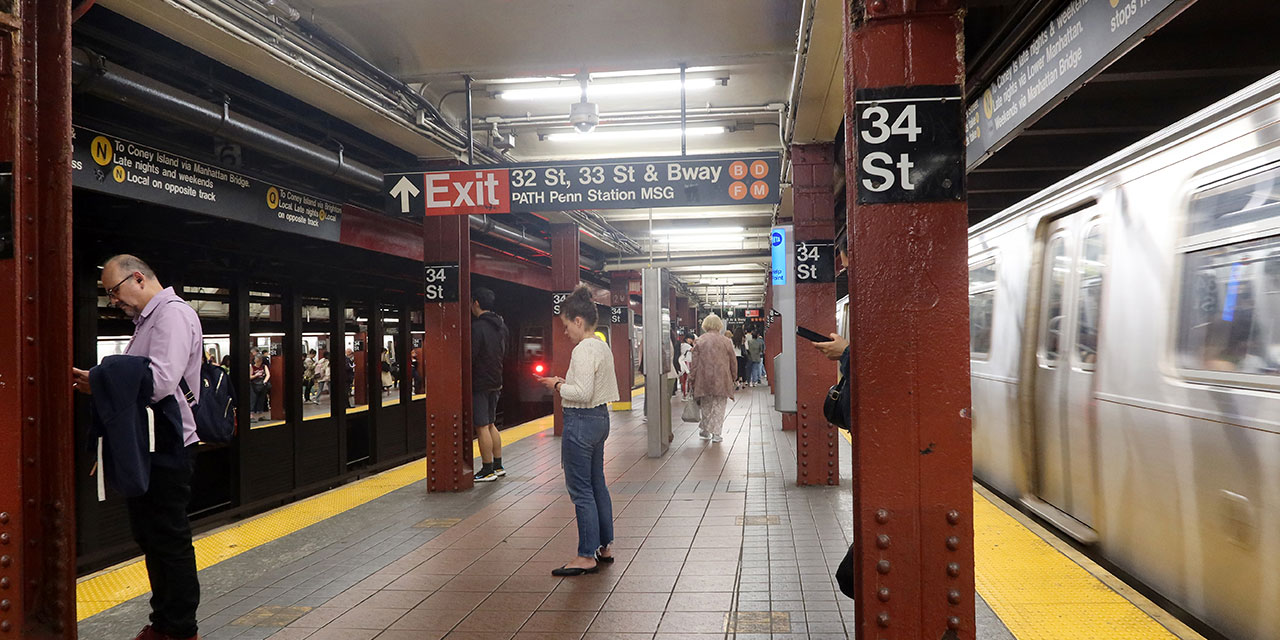
The next mayor must abandon the one-step-forward, one-step-back approach to transit safety that has defined the Adams-Hochul era. Instead, he should level with the public: the subway system requires, indefinitely, a larger police presence—not a reliance on overtime shifts. He should also commit to publishing clear, consistent data on both policing outcomes and the effectiveness of city-backed mental-health interventions.
Adams won office in 2021 largely on a tough-on-crime message. Subway crime was a key voter concern: violent felonies in the system were nearly 9 percent higher than in 2019, the last pre-lockdown year. With 2021 ridership at just 45 percent of 2019 levels, the per-ride risk of serious violent crime rose to 1.32 per million rides—more than double the 0.55 per million in 2019. Most alarming to New Yorkers was the spike in murders: an average of seven per year in 2020 and 2021, compared with fewer than two annually in the decade prior.
Finally, a reason to check your email.
Sign up for our free newsletter today.
Adams has taken a two-pronged strategy on subway crime—one reactive and the other proactive. First, he has flooded the system with officers on overtime shifts to address what he has often framed as a perception of crime, not a reality. Second, since last August, he has deployed mental-health nurses, accompanied by police, to patrol Manhattan subway stations overnight and engage individuals who appear mentally ill or in distress. If a nurse determines that someone is a danger to himself or others, the team can request an ambulance to transport the person to a hospital, even involuntarily. (The state-run MTA runs similar teams during daytime hours.)
The latest subway-crime data, from May, show that Adams’s approach has yielded mixed, and fragile, results. In the first four months of 2025, violent felonies in the subway were nearly 19 percent higher than in 2019. With ridership still below pre-pandemic levels, the per-ride risk of violent crime stood at 0.80 per million rides—an improvement over 2021, before Adams took office, but still significantly higher than pre-2020 norms.
Most alarming, subway safety deteriorated sharply in April, despite the more focused strategy of NYPD commissioner Jessica Tisch. Shortly after taking office last November, Tisch pledged to target quality-of-life offenses to prevent more serious crimes. Yet in April, violent felonies were 44 percent higher than in the same month last year, erasing gains made in the first quarter. Instead of remaining down 6 percent, serious violence is now up nearly 2 percent compared with 2024—far from the steady, decisive progress needed to return to pre-2020 norms. April also saw the subways’ first homicide of the year, ending a promising three-month stretch.
What can the next mayor do? First, acknowledge that policing the subways through overtime shifts—including, since February, a state-supported initiative to put two officers on every overnight train—isn’t sustainable. The budgeted transit police force, at 2,730 officers, stands well below the 4,100 heads it reached in 1991, the last era during which New York needed a sustained push to reduce crime. Yet achieving a bigger transit-police force is impossible without increasing the number of cops overall; the NYPD’s budget headcount of 35,001 is also well below levels of more than 40,000 reached in the early 2000s, and the NYPD recruiting is struggling even to reach this target.
Second, present regular updates to illustrate the efficacy of both policing and mental health policy. A trend toward greater lenience in criminal justice in the half-decade leading up to 2019—including a pullback of prosecution of fare evasion as well as changes to state-level criminal-justice laws—made policing less effective, as recidivist offenders did not stay behind bars. In 2024, police made 23,326 arrests in the transit system, nearly four times as many as in 2021 and more than twice as many as in 2019. But, as my colleague Hannah Meyers has found, 72 percent of those arrests went nowhere, with prosecutors declining to bring charges or judges dismissing them. By contrast, only 45 percent of charges were dead-ends in 2019—itself a significant increase from the mid-2010s norm of closer to 12 percent. These numbers cast doubt on the notion that Hochul and the state legislature have sufficiently tightened criminal-justice laws since 2021 to ensure that more arrests stick.
The same principle applies to mental-health interventions. Privacy laws prevent reporters from learning whether subway crime suspects have histories of serious mental illness or repeated hospital stays and releases. But the city can—and should—report, in aggregate, how many individuals it seeks to commit involuntarily or mandates into outpatient care later go on to commit serious transit crimes. (Both state and city have been adding mental-health treatment capacity over the past half-decade, a policy that the new mayor should continue.)
Of the major Democratic candidates, New Yorkers can choose from an eclectic, and sometimes contradictory, array of choices. Former governor Andrew M. Cuomo has proposed bringing the transit police force to 4,000—the only candidate to do so. Yet he also presided over the loosening of criminal-justice laws between 2017 and 2019 and instigated cuts to inpatient psychiatric beds. That record may make it awkward for him to speak out, as Adams has, about recidivism enabled by those very policies. State Assemblyman Zohran Mamdani would add mental-health teams to the subway. Comptroller Brad Lander has a “Housing First” approach, supplemented by sturdier mental health treatment. But neither has an interest in policing the small crimes to prevent bigger ones. Former comptroller Scott Stringer wants “dedicated officers for every train,” but he hasn’t proposed a larger police force. Cuomo’s assertiveness on this issue, notwithstanding his past decisions and other baggage, helps explain why he is the frontrunner.
Photo by Gary Hershorn/Getty Images
City Journal is a publication of the Manhattan Institute for Policy Research (MI), a leading free-market think tank. Are you interested in supporting the magazine? As a 501(c)(3) nonprofit, donations in support of MI and City Journal are fully tax-deductible as provided by law (EIN #13-2912529).
Source link


















